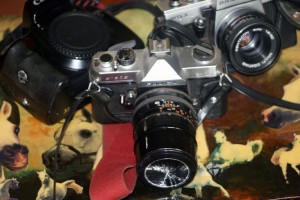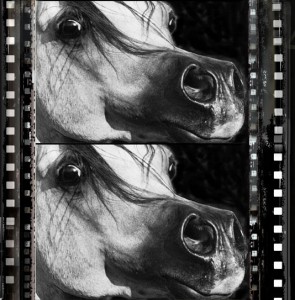Do you know the history of Photography?
We all love looking at photographs, in fact for some (me included) taking photographs has become highly addictive. Recently I had to recheck the actual dates when photographs were first invented and what process was used in the middle 1800’s. It was interesting to revisit what I had mostly forgotten over the years.
This research also comes in the wake of sad news. Eastman Kodak recently announced the New York based company was filing for bankruptcy. Eastman has roots that trace back to the 1880’s. The company is said to have developed the first digital cameras, but didn’t move fast enough to capitalise on the technology, which has now eclipsed the traditional film camera industry. Sad because when you think about photography the name Kodak immediately springs to mind. Their Kodachrome film tended to hold the colour longer than some of the other film. I found this very apparent when searching through my photographs for the new Pearsons View Arabians Australia FB page.
In one of my books on photography it said, the word Photography means drawing (or writing) with light. I particularly like this description because every time you take a photograph you’re really allowing light from the subject to draw its own picture. I then wondered how many people actually know the history of photography so I thought I would do a quick search and find the information.
History of Photography
Pinhole Cameras to The Daguerreotype
By Mary Bellis, About.com Guide www.about.com
Photography” is derived from the Greek words photos (“light”) and graphein (“to draw”). The word was first used by the scientist Sir John F.W. Herschel in 1839. It is a method of recording images by the action of light, or related radiation, on a sensitive material.
Pinhole Camera
Alhazen (Ibn Al-Haytham), a great authority on optics in the Middle Ages who lived around 1000AD, invented the first pinhole camera, (also called the Camera Obscura} and was able to explain why the images were upside down. The first casual reference to the optic laws that made pinhole cameras possible, was observed and noted by Aristotle around 330 BC, who questioned why the sun could make a circular image when it shined through a square hole.
The First Photograph
On a summer day in 1827, Joseph Nicephore Niepce made the first photographic image with a camera obscura. Prior to Niepce people just used the camera obscura for viewing or drawing purposes not for making photographs. Joseph Nicephore Niepce’s heliographs or sun prints as they were called were the prototype for the modern photograph, by letting light draw the picture.
Niepce placed an engraving onto a metal plate coated in bitumen, and then exposed it to light. The shadowy areas of the engraving blocked light, but the whiter areas permitted light to react with the chemicals on the plate. When Niepce placed the metal plate in a solvent, gradually an image, until then invisible, appeared. However, Niepce’s photograph required eight hours of light exposure to create and after appearing would soon fade away.
Louis Daguerre
Fellow Frenchman, Louis Daguerre was also experimenting to find a way to capture an image, but it would take him another dozen years before Daguerre was able to reduce exposure time to less than 30 minutes and keep the image from disappearing afterwards.
The Birth of Modern Photography
Louis Daguerre was the inventor of the first practical process of photography. In 1829, he formed a partnership with Joseph Nicephore Niepce to improve the process Niepce had developed. In 1839 after several years of experimentation and Niepce’s death, Daguerre developed a more convenient and effective method of photography, naming it after himself – the daguerreotype.
Daguerre’s process ‘fixed’ the images onto a sheet of silver-plated copper. He polished the silver and coated it in iodine, creating a surface that was sensitive to light. Then, he put the plate in a camera and exposed it for a few minutes. In 1839, Daguerre and Niepce’s son sold the rights for the daguerreotype to the French government and published a booklet describing the process. The daguerreotype gained popularity quickly; by 1850, there were over seventy daguerreotype studios in New York City alone.
Negative to Positive Process
The inventor of the first negative from which multiple positive prints were made was Henry Fox Talbot, an English botanist and mathematician and a contemporary of Daguerre.
Talbot sensitized paper to light with a silver salt solution. He then exposed the paper to light. The background became black, and the subject was rendered in gradations of grey. This was a negative image, and from the paper negative, Talbot made contact prints, reversing the light and shadows to create a detailed picture. In 1841, he perfected this paper-negative process and called it a calotype, Greek for beautiful picture.
Tintypes
Tintypes, patented in 1856 by Hamilton Smith, were another medium that heralded the birth of photography. A thin sheet of iron was used to provide a base for light-sensitive material, yielding a positive image. The image was painted by light, Daguerre bathed the plate in a solution of silver chloride. This process created a lasting image, one that would not change if exposed to light.
Wet Plate Negatives
In 1851, Frederick Scoff Archer, an English sculptor, invented the wet plate negative. Using a viscous solution of collodion, he coated glass with light-sensitive silver salts. Because it was glass and not paper, this wet plate created a more stable and detailed negative. Photography advanced considerably when sensitized materials could be coated on plate glass. However, wet plates had to be developed quickly before the emulsion dried. In the field this meant carrying along a portable darkroom.
Dry Plate Negatives & Hand-held Cameras
In 1879, the dry plate was invented, a glass negative plate with a dried gelatin emulsion. Dry plates could be stored for a period of time. Photographers no longer needed portable darkrooms and could now hire technicians to develop their photographs. Dry processes absorbed light quickly so rapidly that the hand-held camera was now possible.
Flexible Roll Film
In 1889, George Eastman invented film with a base that was flexible, unbreakable, and could be rolled. Emulsions coated on a cellulose nitrate film base, such as Eastman’s, made the mass-produced box camera a reality.
Color Photographs
In the early 1940s, commercially viable color films (except Kodachrome, introduced in 1935) were brought to the market. These films used the modern technology of dye-coupled colors in which a chemical process connects the three dye layers together to create an apparent color image.
Photographs Carmel Rowley


Leave a Reply